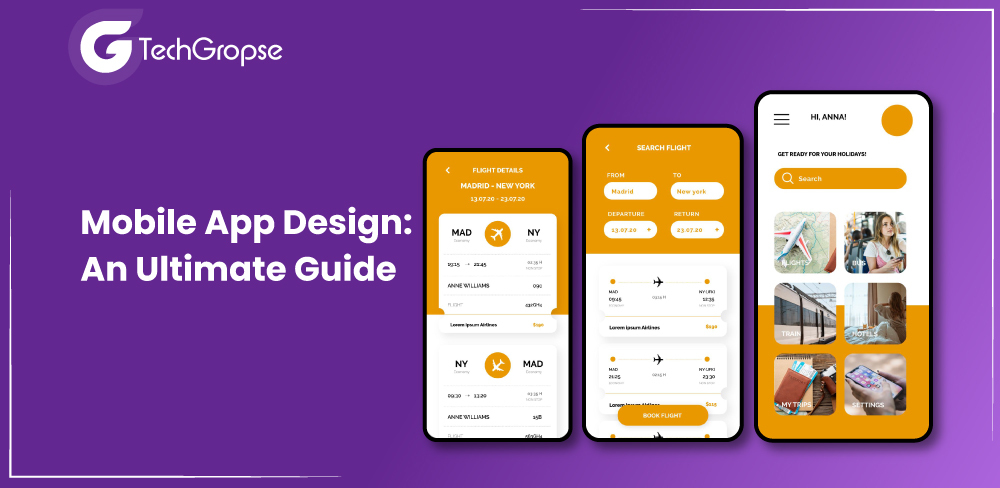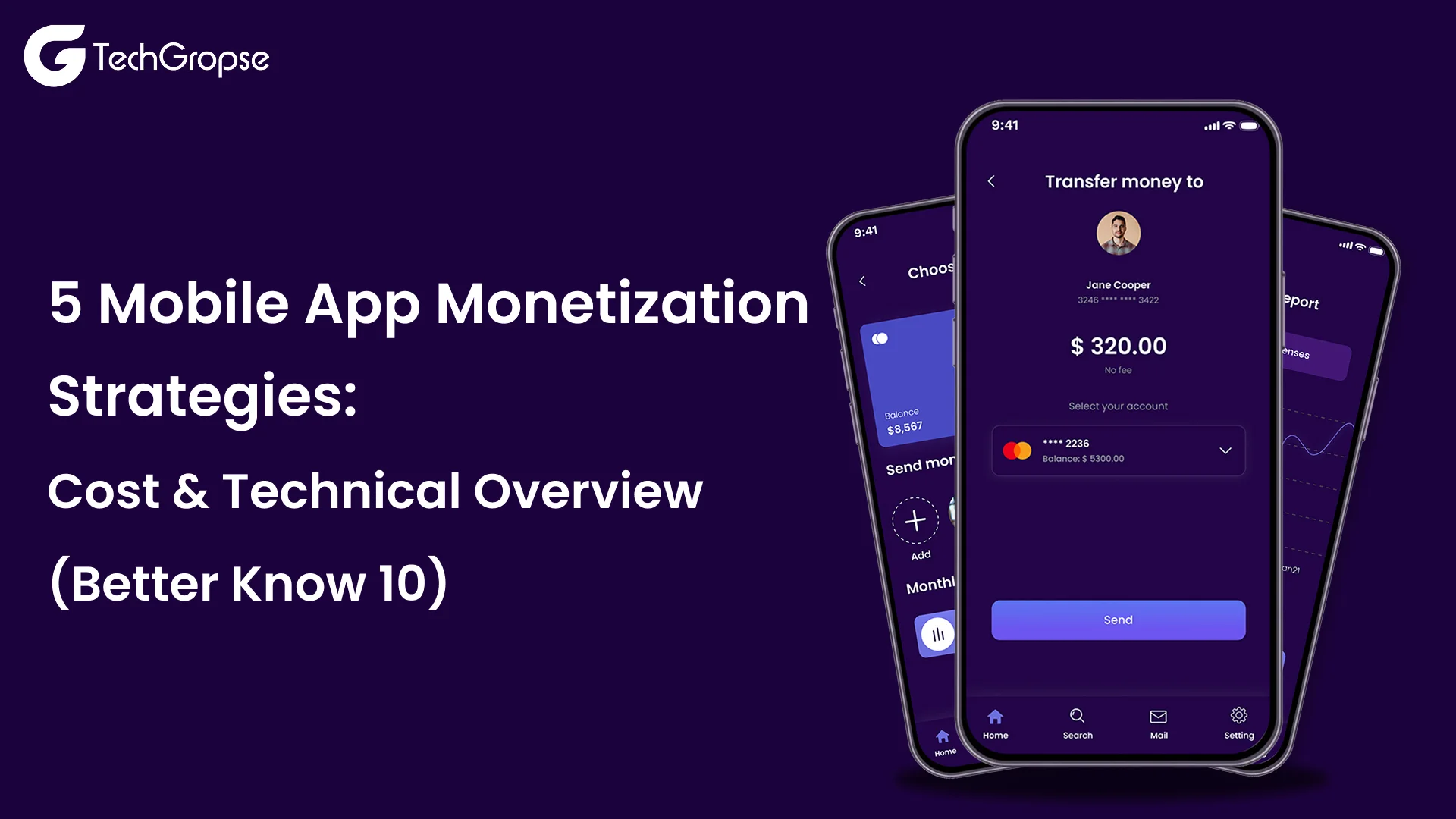When it comes to building a mobile application, coding is the toughest part of app development. But you’re mistaken because the difficulty is building a more attractive app. We all know that people spend a maximum of 5 hours on a phone to search for products and services. But they only visit those sites or apps that look attractive and eye-catching; therefore, mobile app design plays a great role in the success of a business.
Therefore, it is necessary to keep an eye on mobile app design when deciding to build an app for your business. Having an attractive and professional design makes it easy to impress users toward your app. Therefore, it is necessary to create a good design. In simple terms, mobile app design is the art and science of creating visually appealing, user-centered apps that fulfill user’s requirements and provide a delightful user experience.
In today’s broadcast, we will discuss the importance of key principles of mobile app designs, outline the design procedure, and cover the most-known tips for building an exceptional mobile application that resonates with users.
What is Mobile UX Design?
Mobile design refers to a user’s subjective experience with a mobile application. Thus you have to design mobile app. It is generally a procedure to create user interfaces and user experiences specifically tailored for mobile devices. It revolves around optimizing the visual and functional aspects of applications and websites to meet the unique challenges and opportunities the mobile platform presents.
One of the fundamental principles of mobile design is responsiveness. However, the mobile app designer must make sure that interfaces dynamically adapt to various screen sizes and resolutions, providing a consistent and user-friendly experience across a spectrum of devices.
Why Is Mobile UX Design Essential?
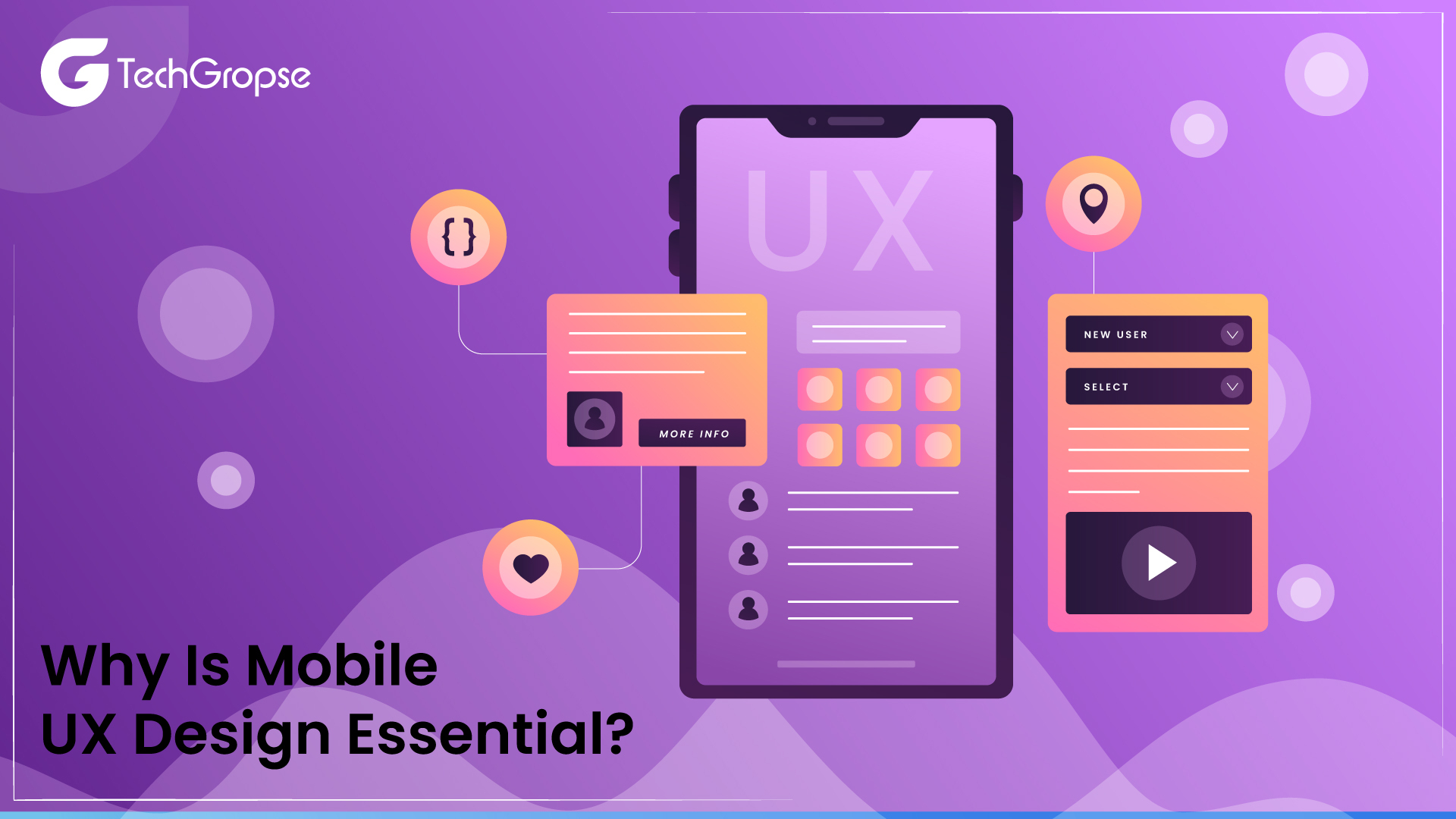
Mobile UX (User Experience) design is important for many reasons, mainly focusing on the unique features and usage patterns associated with mobile devices. Here are the main reasons why mobile UX design is important:
- Popularity of Mobile Devices
Mobile devices, such as smartphones and tablets, are present everywhere in today’s society. People use them for a variety of purposes, including communication, information search, and entertainment. Effective mobile UX design ensures that users can easily and intuitively interact with apps, making them more likely to engage and continue using them. However, you have to search for a mobile app design agency to build a functional design.
- Limited Screen Real Estate
Mobile screens are significantly smaller than desktop screens. Mobile UX design addresses this limitation by prioritizing essential content and features, ensuring a focused, clutter-free interface. Well-designed mobile experiences take advantage of gestures and touch interactions to make the most of the available space.
- Touch Interaction
Unlike desktop interfaces that rely on a mouse and keyboard, mobile devices use touch as the primary mode of interaction. Mobile UX design optimizes interfaces for touch gestures, ensuring responsiveness and a natural feel. This includes considerations for tap targets, swipe gestures, and pinch-to-zoom functionality.
- On-the-Go Usage
Mobile devices are often used in dynamic and on-the-go situations. Mobile UX design takes into account the context of use, emphasizing quick access to essential information and streamlined navigation. It aims to provide a seamless experience for users who may be multitasking or using the device in various environments.
- Performance and Speed
Mobile users expect fast and responsive experiences. Mobile UX design involves optimizing performance to reduce loading times and minimize friction in interactions. This is important for engaging users, as a slow or boring experience can lead to frustration and abandonment.
Key Principles of Mobile App Design
We all know that an attractive design makes it easier to attract users to your app or website. However, you must adhere to specific design principles in order to build a successful, user-friendly and engaging mobile app. These principles are the effective app design that caters to a wide range of users while incorporating intuitive functionality. Below, we list out some key principles:
1. Simplicity
Simplicity is the cornerstone of mobile app design. Users should be able to navigate the application without experiencing friction or overwhelming complexity. Employ minimalism in the design- clear text, simple layouts, and easy-to-recognize icons. This approach will make sure that even first-time users feel comfortable using the application. As a result, you will get improved user satisfaction and better app engagement.
Once you search for a mobile app development company, ask them to create simple designs that help you improve the performance of an app.
2. Consistency
Consistency is another principle of mobile app design. Consistent design is visually appealing and essential to build a seamless user experience. Therefore, it is necessary to use consistent typography, icons, colors and other design elements throughout the app to reinforce recognition and avoid cognitive overload. Additionally, consistency always applies to navigation and interactions within the application, ensuring that users can easily predict and understand the application’s behavior.
3. User Feedback
Incorporating user feedback into mobile app design is crucial in order to improve the overall user experience. Therefore, you have to provide visual cues, like highlighted buttons or loading animations, to inform users that the app has acknowledged their input. It instills confidence in users regarding the app’s features and responsiveness.
However, you have to search for a leading Android app development company with a dedicated designer team as they know mobile app design principles and other essential things.
4. User-Centered Design
The user-centered design revolves around understanding and prioritizing the target audience’s requirements, expectations, and preferences. However, you have to research and analyze the data to ensure your application’s design aligns with the user’s needs. This approach results in better user experience, higher retention rates and increased engagement.
5. Platform-Specific Design
It is crucial to make sure that the designs are platform-specific. If you want to make an app for Android, ensure the design is perfect as per the platform. Following these guidelines, make sure your application fits seamlessly into each platform’s ecosystem, leverages platform-specific features, and provides a native user experience.
Popular Tools For Mobile App Design
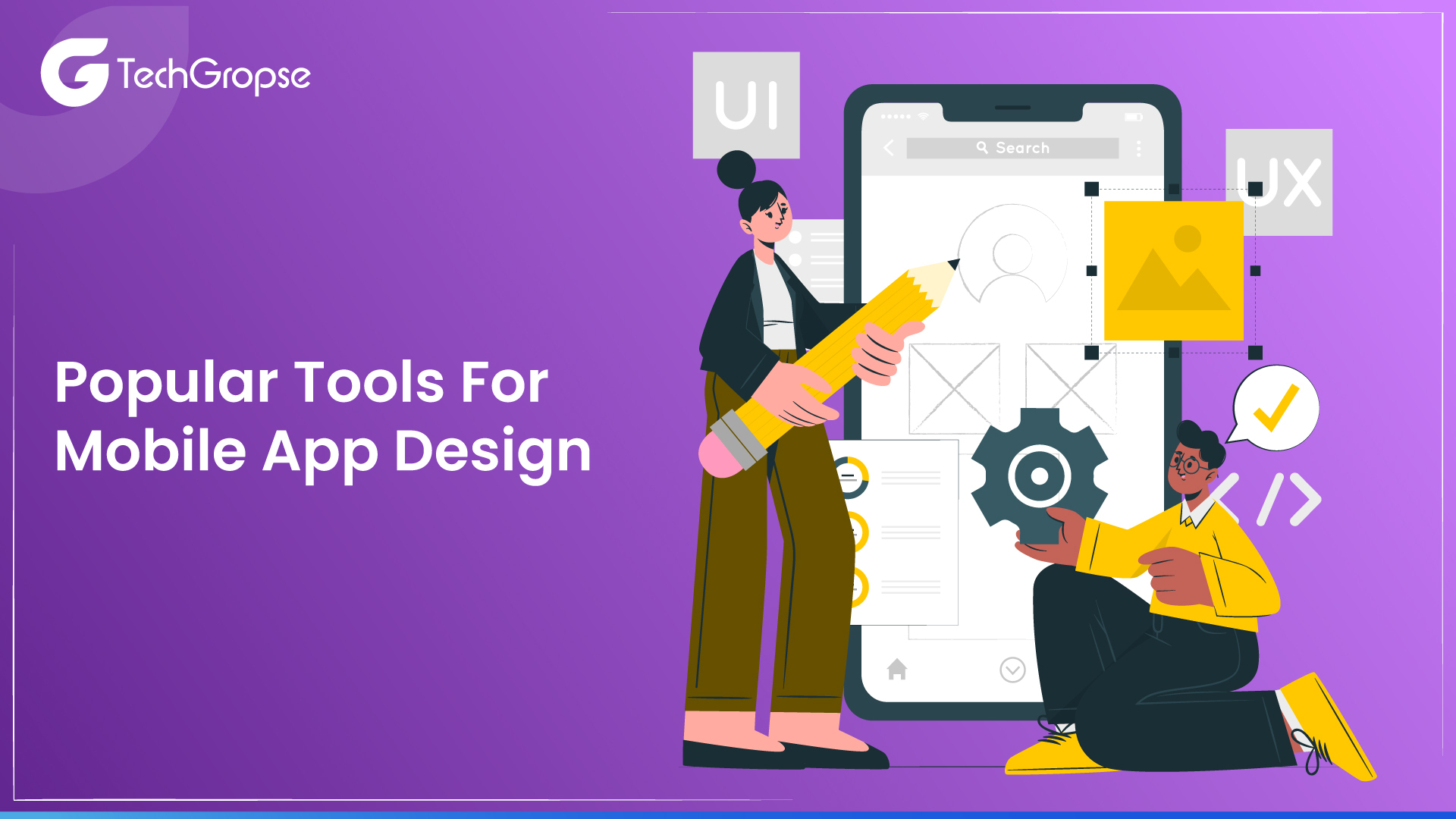
Designing a mobile app involves a combination of creativity, functionality, and precision. Various tools have emerged to support the mobile app design process, catering to various aspects such as prototyping, user interface (UI) design, and collaboration. Here are six popular tools for mobile app design:
1. Sketch
Sketch is a powerful vector design tool designed for UI/UX designers. Known for its simplicity and efficiency, Sketch provides a streamlined platform for creating pixel-perfect designs and user interfaces. Its flexible feature set includes an extensive library of plugins that enhance functionality, allowing designers to customize their workflow.
Focused on clarity and precision, Sketch is especially effective at creating icons, user interfaces, and interactive prototypes. Its workbench approach simplifies the design process, allowing designers to create cohesive and visually appealing designs. Sketch has become an indispensable part of the design community, loved for its intuitive interface, rapid design capabilities, and commitment to meeting the growing needs of digital designers. It means you can use it for mobile app design.
2. Adobe XD
Adobe XD is a comprehensive design and prototyping tool that meets the needs of UI/UX designers. With seamless integration across the Adobe Creative Cloud ecosystem, XD makes it easy for designers to create interactive prototypes. Its user-friendly interface facilitates the design process, allowing for the creation of responsive and visually appealing interfaces.
Adobe XD supports features like automatic animation, micro-interactions, and real-time collaboration, making it a flexible solution for individual designers and collaborative teams. The ability to seamlessly transition from design to prototyping helps streamline workflows, while features like shared prototypes and design specs improve collaboration between designers and developers, ensuring a smooth transition.
3. Figma
Figma stands out as a cloud-based design tool that has revolutionized collaboration in the world of UI/UX design. Its real-time collaboration features allow multiple designers to work on a project together, promoting smooth teamwork. Accessible from any device, Figma improves the flexibility of the design process, making it an attractive choice for distributed teams. Figma takes care of the entire design process by offering both design and prototyping capabilities.
The platform’s versatility extends to its robust library of design assets, plugins, and integrations, giving designers a comprehensive toolbox. Figma’s commitment to user-centered collaboration, along with its intuitive and responsive interface, has propelled Figma to become the preferred design tool for creating interactive and intuitive experiences.
4. InVision
InVision is a leading prototyping tool that excels at converting static designs into interactive, animated prototypes. Aimed at UI/UX designers, InVision facilitates seamless collaboration and effective design iteration. Designers use InVision to create clickable prototypes that simulate user interactions, making it an invaluable tool for testing and gathering user feedback.
The platform’s user-friendly interface allows stakeholders to provide direct feedback on the design, streamlining the feedback loop. InVision promotes a smooth transition from design to development with test and handoff capabilities, making it easier to deploy designs accurately.
With its focus on user experience, InVision has become the go-to choice for designers looking for a prototyping tool suited to the dynamic and iterative nature of the design process. But you have to hire dedicated developers for the best results, as they are well-versed in building functional apps.
5. Proto.io
Proto.io is a web prototyping tool that enables designers to bring their app concepts to life with interactive and dynamic prototypes. Suitable for web and mobile applications, Proto.io helps create realistic user experiences. Designers can integrate animations and gesture-based interactions, allowing for a highly accurate presentation of the final product. Known for its rapid prototyping capabilities, Proto.io allows designers to iterate and test concepts quickly and efficiently.
The platform’s user-friendly interface makes it accessible to designers of different skill levels. Proto.io plays a vital role in the design process, facilitating the communication of design ideas and ensuring a user-centric approach to application development. With its focus on usability and realistic interactions, Proto.io remains a valuable tool for designers looking to validate and refine their mobile app concepts.
6. Zeplin
Zeplin is a collaboration tool that bridges the gap between designers and developers. It simplifies the delivery process by providing a platform to share design files, specifications, and assets. Zeplin creates code snippets and style guides, making it easier for developers to implement designs accurately. The tool’s focus on collaboration and communication helps streamline workflows between design and development teams, reducing the risk of misunderstandings.
But when it comes to using this tool for mobile app design, you have to hire Android app developers because they are well-trained to use different types of tools to build an app.
These six tools address different stages of the mobile app design process, and designers often choose a combination based on preferences, project requirements, and team collaboration needs.
Tips to Get Success In Mobile App Design
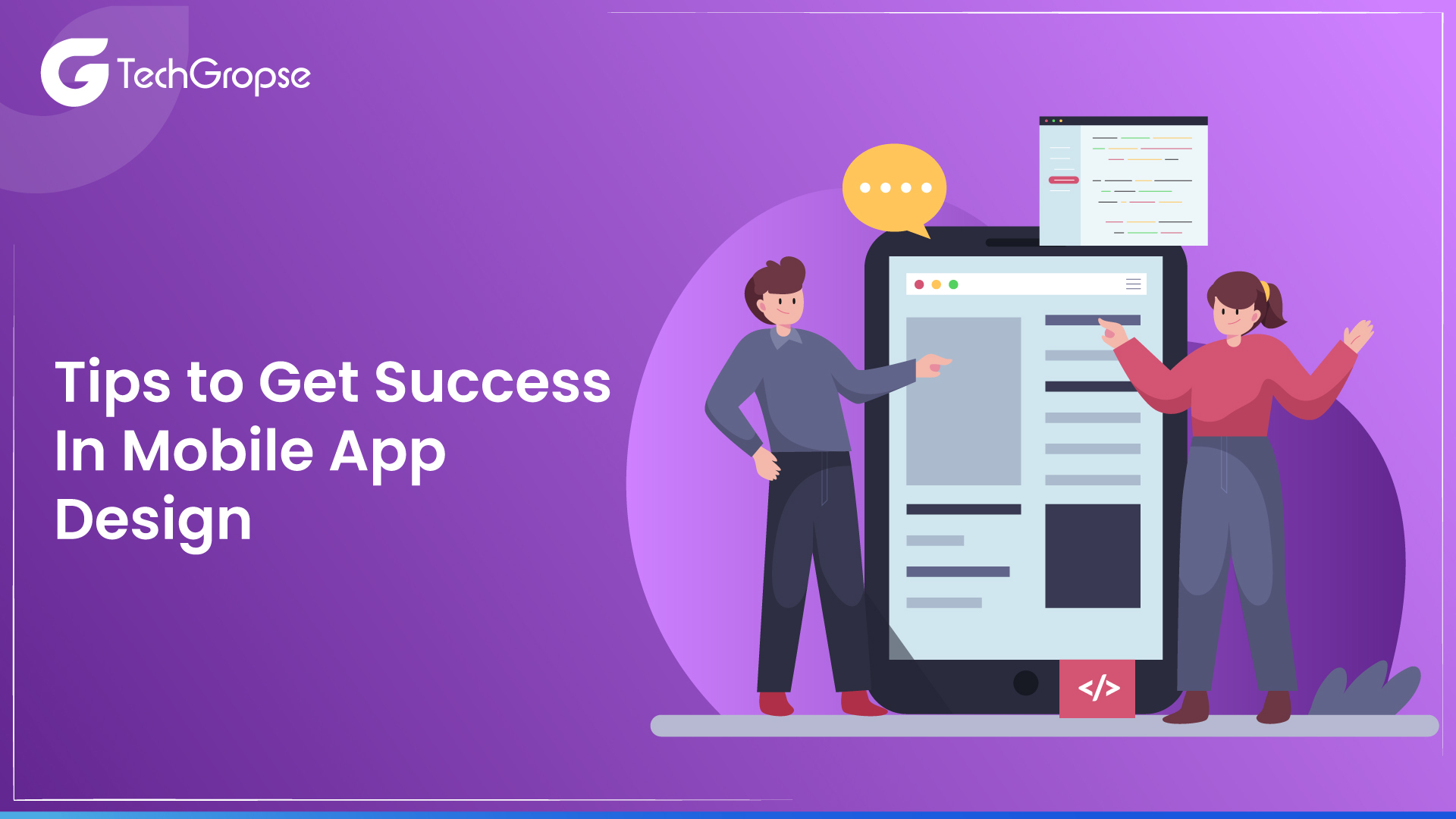
Once you know which tools help to build mobile app designs, you have to take the next step. But you need to implement best practices to promote success. Below are some helpful tips for creating a successful mobile app design:
1. Understand the Target Audience
Knowing the target audience is the primary way to design an app that meets their requirements and expectations. You have to research to understand their preferences, habits and pain points. You have to create user personas to represent the target users and design the application around these personas to make sure it caters to their specific needs.
2. Adhere to Design Principles
Stick to core mobile app design principles such as user-centric design, simplicity, consistency, and feedback. These mobile app design principles will assist in creating an intuitive user experience that keeps users engaged and satisfied with your application.
3. Keep the User Journey Simple
Simple user journeys give permission to the users to accomplish tasks instantly and efficiently. Offer straightforward navigation options, focus on core features, and minimize interactions required to complete tasks. You can enhance your application’s usability and overall user experience by simplifying the user journey.
4. Iterate Based on User Feedback
We all know that the design is an interactive procedure. Regularly updated and refined the app based on user feedback and change requirements. By continuously analyzing user feedback, you are able to identify areas for improvement, enhance the usability, and resolve issues and experience of your app.
5. Incorporate Appealing Visual
While it is important to prioritize an application’s functionality, visual appeal helps create a memorable and positive user experience. You have to use modern design elements and imagery to enhance your app’s aesthetics without compromising clarity and usability. It will help you in getting success in mobile app design.
Cost to Create Mobile App Design
Creating a mobile app design involves many different factors that contribute to the overall cost. Costs may vary depending on the complexity of the application, the features involved, and the expertise of the designer. Here’s a breakdown of the potential costs associated with mobile app design:
| Factor | Description | Cost Range |
| Complexity | Simple apps with basic features are less costly. Complex apps with advanced functionalities require more design work. | $5,000 – $20,000 |
| Platform | Designing for a single platform (iOS or Android) is generally less expensive than designing for both. | $2,000 – $10,000 per platform |
| UI/UX Design | High-quality user interface (UI) and user experience (UX) design contribute significantly to costs. | $5,000 – $15,000 |
| Customization | The level of customization in design elements affects costs. Custom graphics, icons, and animations increase the overall cost. | $3,000 – $10,000 |
| Number of Screens | The more screens in the app, the higher the design cost. Each screen requires attention to detail and consistency. | $100 – $500 per screen |
| Testing and Revisions | Iterative testing and revisions ensure a polished design. Additional costs may arise if extensive revisions are needed. | $2,000 – $5,000 |
| Responsive Design | Ensuring the app design is responsive across various devices and screen sizes adds to the cost. | $2,000 – $8,000 |
| Icon Design | Creating a unique and memorable app icon is a crucial part of mobile app design. | $500 – $2,000 |
| Prototyping | Building interactive prototypes for user testing and feedback contributes to the overall cost. | $1,000 – $5,000 |
It is important to note that these are general estimates and actual costs may vary depending on the specific requirements of the project and the design agency or freelancer you hired. Investing in a well-designed app is essential for a positive user experience and overall success in the competitive mobile app market.
Summing Up
Mobile app design is the essential process that ensures the success of the application. Therefore, it is necessary to keep an eye on the design of the application. It will help you in making sure that the design is looking professional and attractive.
However, it is not easy to implement the design to the application, so you have to search for a leading mobile app design company with good years of experience and knowledge to create innovative and top-notch mobile app design.
FAQs
1. Why is mobile application design important?
Mobile app design is important because it directly impacts user experience. Well-designed apps are more user-friendly, leading to higher user engagement, satisfaction, and, ultimately, app success.
2. How do you start designing mobile applications?
Start with in-depth research about your target audience, industry trends, and competitors. Create user personas, map user journeys, and conduct wireframing and prototyping before diving into the actual design.
3. What are the fundamentals of user interface design?
User interface design principles include visual hierarchy, color theory, typography, and spacing. These principles ensure a consistent and visually appealing design that enhances user engagement.
4. What tools can I use to create wireframes for mobile apps?
Popular tools for creating wireframes for mobile apps include Sketch, Adobe XD, and Figma. Choose a tool that suits your preferences and project requirements.
5. How important is responsive design in mobile application development?
Responsive design is important because it ensures a consistent user experience across different devices and screen sizes. Flexible design allows your app to adapt seamlessly across different platforms.

Hello All,
Aman Mishra has years of experience in the IT industry. His passion for helping people in all aspects of mobile app development. Therefore, He write several blogs that help the readers to get the appropriate information about mobile app development trends, technology, and many other aspects.In addition to providing mobile app development services in USA, he also provides maintenance & support services for businesses of all sizes. He tried to solve all their readers’ queries and ensure that the given information would be helpful for them.






